

In mineralogy, diamond is a metastable allotrope of carbon, where the carbon atoms are arranged in a variation of the face-centered cubic crystal structure called a diamond lattice. Diamond is less stable than graphite, but the conversion rate from diamond to graphite is negligible at standard conditions. Diamond is renowned as a material with superlative physical qualities, most of which originate from the strong covalent bonding between its atoms. In particular, diamond has the highest hardness and thermal conductivity of any bulk material. Those properties determine the major industrial application of diamond in cutting and polishing tools and the scientific applications in diamond knives and diamond anvil cells.
Because of its extremely rigid lattice, it can be contaminated by very few types of impurities, such as boron and nitrogen. Small amounts of defects or impurities (about one per million of lattice atoms) color diamond blue (boron), yellow (nitrogen), brown (lattice defects), green (radiation exposure), purple, pink, orange or red. Diamond also has relatively high optical dispersion (ability to disperse light of different colors).
Most natural diamonds are formed at high temperature and pressure at depths of 140 to 190 kilometers (87 to 118 mi) in the Earth's mantle. Carbon-containing minerals provide the carbon source, and the growth occurs over periods from 1 billion to 3.3 billion years (25% to 75% of the age of the Earth).
Diamonds are brought close to the Earth's surface through deep volcanic eruptions by a magma, which cools into igneous rocks known as kimberlites and lamproites. Diamonds can also be produced synthetically in a HPHT method which approximately simulates the conditions in the Earth's mantle. An alternative, and completely different growth technique is chemical vapor deposition (CVD). Several non-diamond materials, which include cubic zirconia and silicon carbide and are often called diamond simulants, resemble diamond in appearance and many properties. Special gemological techniques have been developed to distinguish natural diamonds, synthetic diamonds, and diamond simulants.
Diamonds are thought to have been first recognized and mined in India, where significant alluvial deposits of the stone could be found many centuries ago along the rivers Penner, Krishna and Godavari. Diamonds have been known in India for at least 3,000 years but most likely 6,000 years.
Diamonds have been treasured as gemstones since their use as religious icons in ancient India. Their usage in engraving tools also dates to early human history. The popularity of diamonds has risen since the 19th century because of increased supply, improved cutting and polishing techniques, growth in the world economy, and innovative and successful advertising campaigns.
In 1772, Antoine Lavoisier used a lens to concentrate the rays of the sun on a diamond in an atmosphere of oxygen, and showed that the only product of the combustion was carbon dioxide, proving that diamond is composed of carbon.
Later in 1797, Smithson Tennant repeated and expanded that experiment. By demonstrating that burning diamond and graphite releases the same amount of gas, he established the chemical equivalence of these substances.
In 1867, a stone found in South Africa was recognized as a diamond. Within a few years, this began a wild search for diamonds, both in river diggings and inland.
In 1870-71, dry diggings, including most of the celebrated mines, were discovered. Well-known South African diamond mines are the Dutoitspan, Bultfontein, De Beers, Kimberley, Jagersfontein, and Premier. Botswana, Namibia, and South Africa are now the world's major diamond-producing nations; other important countries include Australia, Russia, Brazil, Angola, Canada, Sierra Leone, Ghana, Tanzania, and Venezuela. The use of diamonds to finance African rebel groups and fuel civil strife in the 1990s led, in 2001 and 2002, to international agreements designed to certify legitimately mined diamonds.
The most familiar uses of diamonds today are as gemstones used for adornment, a use which dates back into antiquity, and as industrial abrasives for cutting hard materials. The dispersion of white light into spectral colors is the primary gemological characteristic of gem diamonds.
In the 20th century, experts in gemology developed methods of grading diamonds and other gemstones based on the characteristics most important to their value as a gem. Four characteristics, known informally as the four Cs, are now commonly used as the basic descriptors of diamonds: these are carat (its weight), cut (quality of the cut is graded according to proportions, symmetry and polish), color (how close to white or colorless; for fancy diamonds how intense is its hue), and clarity (how free is it from inclusions).
Not all diamonds found on Earth originated on Earth. Primitive interstellar meteorites were found to contain carbon possibly in the form of diamond. A type of diamond called carbonado that is found in South America and Africa may have been deposited there via an asteroid impact (not formed from the impact) about 3 billion years ago. These diamonds may have formed in the intrastellar environment, but as of 2008, there was no scientific consensus on how carbonado diamonds originated.
Diamonds can also form under other naturally occurring high-pressure conditions. Very small diamonds of micrometer and nanometer sizes, known as microdiamonds or nanodiamonds respectively, have been found in meteorite impact craters. Such impact events create shock zones of high pressure and temperature suitable for diamond formation. Impact-type microdiamonds can be used as an indicator of ancient impact craters. Popigai crater in Russia may have the world's largest diamond deposit, estimated at trillions of carats, and formed by an asteroid impact.
Scientific evidence indicates that white dwarf stars have a core of crystalized carbon and oxygen nuclei. The largest of these found in the universe so far, BPM 37093, is located 50 light-years. away in the constellation Centaurus. A news release from the Harvard-Smithsonian Center for Astrophysics described the 2,500-mile (4,000 km)-wide stellar core as a diamond. Read more
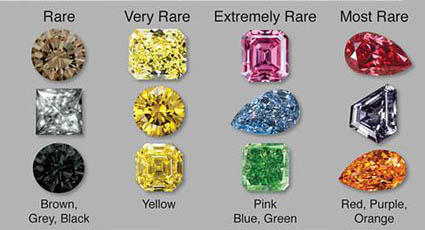 >
>
A chemically pure and structurally perfect diamond is perfectly transparent with no hue, or color. However, in reality almost no gem-sized natural diamonds are absolutely perfect. The color of a diamond may be affected by chemical impurities and/or structural defects in the crystal lattice. Depending on the hue and intensity of a diamond's coloration, a diamond's color can either detract from or enhance its value. For example, most white diamonds are discounted in price when more yellow hue is detectable, while intense pink diamonds or blue diamonds (such as the Hope Diamond) can be dramatically more valuable. Of all colored diamonds, red diamonds are the rarest. The Aurora Pyramid of Hope displays a spectacular array of naturally colored diamonds, including red diamonds.
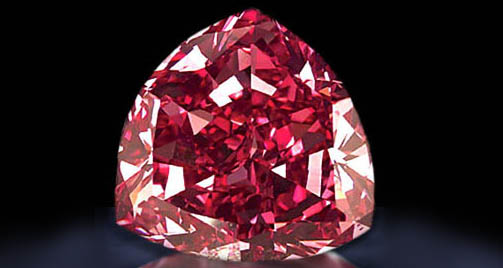

The "Purple Orchid" diamond is an incredibly rare fancy intense pinkish purple VS2 diamond. it is 3.37 carats, a size practically unheard of for purple diamonds. It took Leibish & Co., the top name in fancy diamonds, four months to cut and polish this beauty. It is worth about $4million.
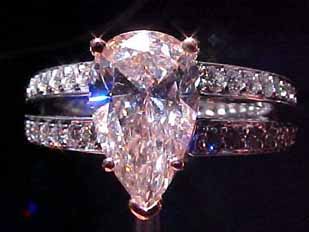
Pink diamond is a type of diamond that has pink color. The source of their pink color is greatly debated in the gemological world but it is most commonly attributed to enormous additional pressure that these diamonds undergo during their formation. Pink diamonds belong to a subcategory of diamonds called fancy color diamonds, the generic name for all diamonds that exhibit any sort of color. Pink diamonds range from flawless to included, just as do white diamonds. Several pink diamonds with internally flawless clarity have been discovered, but only one is known to be completely flawless, the Pink Star (which was shortly renamed the Pink Dream until it diverted to Sotheby's). Read more
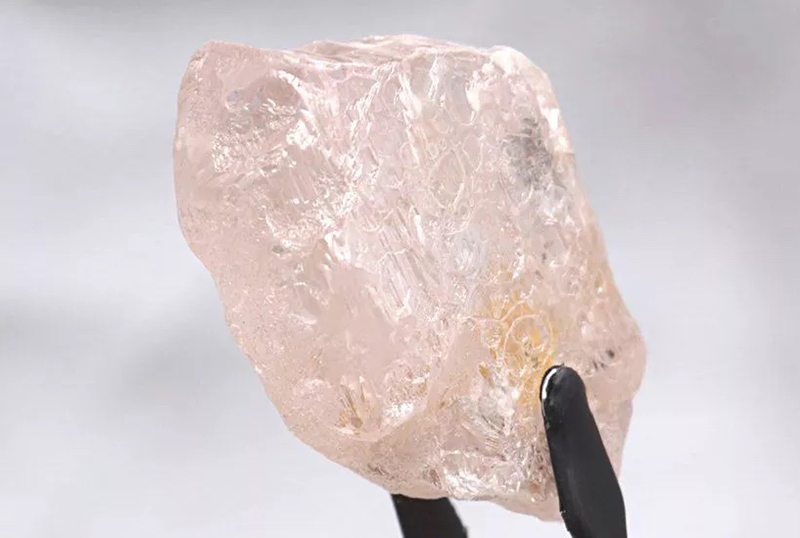
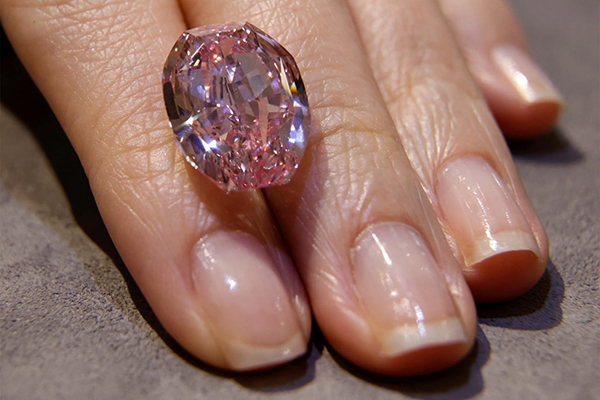

February 22, 2012
A 12.76-carat pink diamond has been unearthed in an Australian mine, the largest ever found in the country. Christened as the Argyle Pink Jubilee, the diamond was found in mining giant Rio Tinto's Argyle diamond mine in Western Australia's East Kimberly region. The Argyle mine is the world's largest producer of pink diamonds, with Rio Tinto reporting that the mine generates more than 90% of the global market supply. "A diamond of this caliber is unprecedented - it has taken 26 years of Argyle production to unearth this stone, and we may never see one like this again," said Argyle Pink Diamonds Manager Josephine Johnson in a statement.
Rio Tinto expects that after two months of assessment and planning, it will take ten days to cut and polish the diamond into a single stone. The finished stone will be offered for sale during the company's annual Argyle Pink Diamonds Tender later this year. According to Australia's Herald Sun, the diamond will be worth at least US$1.07 million.
However, it is premature to judge the stone's significance at this point, according to Sotheby's Asia department head of jewelry, Chin Yeow Quek. "It is hard to judge a stone in the rough. It really depends on how large the rock will be polished downed to," said Quek, explaining that diamonds tend to lose at least 50 percent of their weight during the polishing process. "It also depends on the intensity of color and clarity," he added.
He cited as a benchmark the 24.78-carat fancy intense pink diamond sold by Sotheby's Geneva office in November 2010 for more than US $46 million, which set the world's auction record for any diamond and jewel at US$1.86 million per carat.
Natural pink diamonds are considered one of the most valuable types of diamonds, and are typically found in museums, fine auction houses, and on the hands of royalty. The company said the Argyle Pink Jubilee is in a similar light pink color to the 24-carat Williamson Pink that Queen Elizabeth II received as a wedding gift.

Black diamonds are real diamonds, with the same chemical composition as traditional colorless diamonds. The main difference between colorless diamonds and black diamonds is the number of inclusions, which are responsible for giving black diamonds their color.
Black diamonds occur very rarely in nature and in fact they are even the rarest of all fancy colored diamonds. ... For this reason natural black diamonds are extremely hard to cut and polish. Furthermore, most natural black diamonds have colorless streaks which cause surface imperfections inside the diamond.
Black diamonds, however are more affordable than other white or colored diamonds though they are gaining in popularity among the elites of Hollywood and in the fashion world. Natural Fancy Black Diamonds will likely cost anywhere from $3,000 to $5,000 per carat.
The symbolism of the Black Diamond is transcendence, charisma, power, authority, having mystic powers.
These rocks may look rough and unpolished they are actually diamonds from outer space.
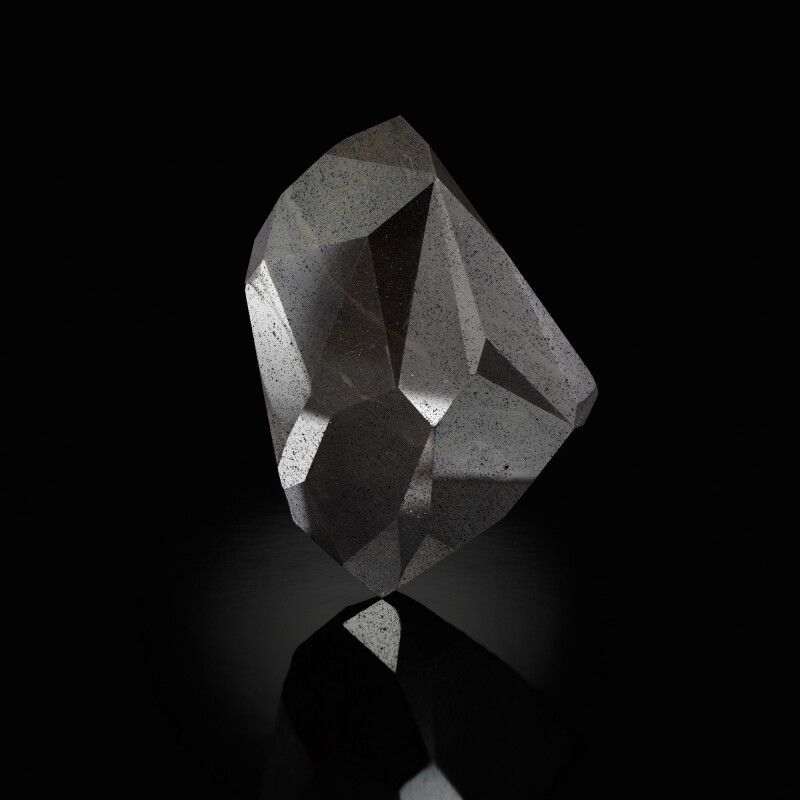
The Enigma Diamond
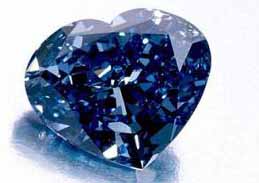

Blue diamond is a type of diamond which exhibits all of the same inherent properties of the mineral except with the additional element of blue color in the stone. They are colored blue by trace amounts of boron that contaminate the crystalline lattice structure. Blue diamonds belong to a subcategory of diamonds called fancy color diamonds, the generic name for diamonds that exhibit intense color. Read more
Scientists have finally made an elusive meteorite diamond, predicted to be 50% harder than Earth diamonds Live Science - August 18, 2025

Scientists have created the first sizable meteorite diamond - also known as lonsdaleite or hexagonal diamond - a material predicted to be even harder than the diamonds normally found on Earth. The high-pressure, high-temperature technique created tiny disks of this ultrahard diamond which could ultimately replace conventional diamonds in applications such as drilling tools and electronics.
Physicists Create Lab-Grown Diamond Even Harder Than Natural Science Alert - March 4, 2025

The team put graphite (another super-hard material) under an intense amount of pressure, before heating it to 1,800 K (that's 1,527 degrees C or 2,780 degrees F). The resulting diamond has a hexagonal lattice crystal structure, rather than the normal cubic structure. Hexagonal diamond (or lonsdaleite) was first brought to the attention of scientists more than 50 years ago, after it was discovered in a meteorite impact site. The new research is the first solid evidence that this internal structure boosts hardness.
World’s Second Biggest Diamond - Certified at 2,492 Carats - Found In Botswana Mine
The rough stone is a certified whopper at 2,492 carats – that’s nearly half a kilo or just over a pound – and was found amongst kimberlite in the Karowe mine, in the center of the country, during operations by diamond exploration and mining company Lucara Diamond.
Forget Billions of Years: Scientists Have Grown Real Diamonds in Just 150 Minutes Science Alert - April 25, 2024

A new method based on a mix of liquid metals can pop out an artificial diamond in a matter of minutes, without the need for a giant squeeze. While high temperatures were still required, in the region of 1,025°C or 1,877°F, a continuous diamond film was formed in 150 minutes, and at 1 atm (or standard atmosphere unit). That's the equivalent of the pressure we feel at sea level, and tens of thousands of times less than the pressure normally required.
Diamond Can Be Squeezed Into Something Even Harder. Now We Know How to Do It. Science Alert - March 19, 2024
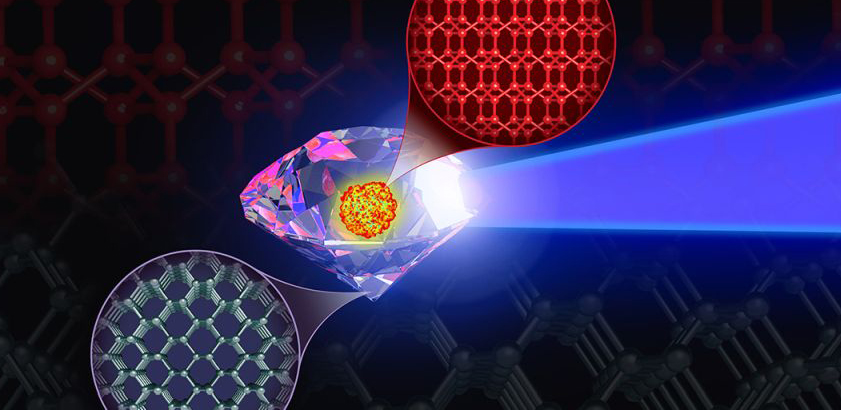
Simulations of an elusive carbon molecule that leaves diamonds in the dust for hardness may pave the way to creating it in a lab. Known as the eight-atom body-centered cubic (BC8) phase, the configuration is expected to be up to 30 percent more resistant to compression than diamond - the hardest known stable material on Earth.
Fountains of diamonds that erupt from Earth's center are revealing the lost history of supercontinents Live Science - January 15, 2024
Diamonds seem to reach Earth's surface in massive volcanic eruptions when supercontinents break up, and they form when continents come together.
A HREF="https://www.sciencealert.com/tiny-cracks-can-penetrate-diamond-faster-than-the-speed-of-sound">Defects Seen Traveling Through Diamond Faster Than The Speed of Sound Science Alert - November 22, 2023
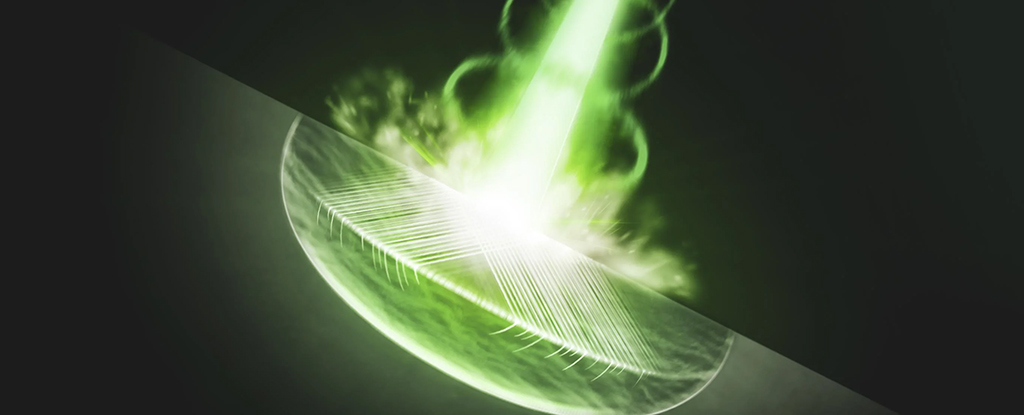
Researchers from several international institutions were able to record linear defects – or dislocations – traveling faster than the speed of sound through diamond; findings that should also apply to other important materials, improving models on everything from earthquakes to aircraft.
Fountains of diamonds erupt from Earth's center as supercontinents break up Live Science - August 20, 2023
Researchers have discovered a pattern where diamonds spew from deep beneath Earth's surface in huge, explosive volcanic eruptions.
New geology study cracks the code of what causes diamonds to erupt PhysOrg - July 27, 2023
We've Discovered How Diamonds Make Their Way To The Surface And It May Tell Us Where To Find Them IFL Science - July 27, 2023
New research, carried out by researchers in a variety of countries and published in Nature, suggests that diamonds may be a sign of break up too - of Earth’s tectonic plates, that is. It may even provide clues to where is best to go looking for them. Diamonds, being the hardest naturally-occurring stones, require intense pressures and temperatures to form. These conditions are only achieved deep within the Earth. So how do they get from deep within the Earth, up to the surface? Diamonds are carried up in molten rocks, or magmas, called kimberlites. Until now, we didn’t know what process caused kimberlites to suddenly shoot through the Earth’s crust having spent millions, or even billions, of years stowed away under the continents.
This Diamond Inside Another Diamond Is A Stunning Geological Freak - March 2, 2023
Back in 2019, a diamond within a diamond was unearthed at a mine in the Sakha Republic of Siberia by the Russian mining company ALROSA. Owing to its unusual features, it was named the "Matryoshka Diamond" after Russia's iconic stacking dolls. Inside the lentil-sized diamond, measuring just 4.8 by 4.9 by 2.8 millimeters (0.189 by 0.193 by 0.110 inches), there is an internal cavity that contains another diamond measuring just 1.6 cubic millimeters (0.0000976 cubic inches). As you can see in the GIF below, the internal diamond is totally loose and free to rattle around the cavity inside the other diamond.
Scientists blasted plastic with lasers and turned it into tiny diamonds and a new type of water Live Science - September 22, 2022
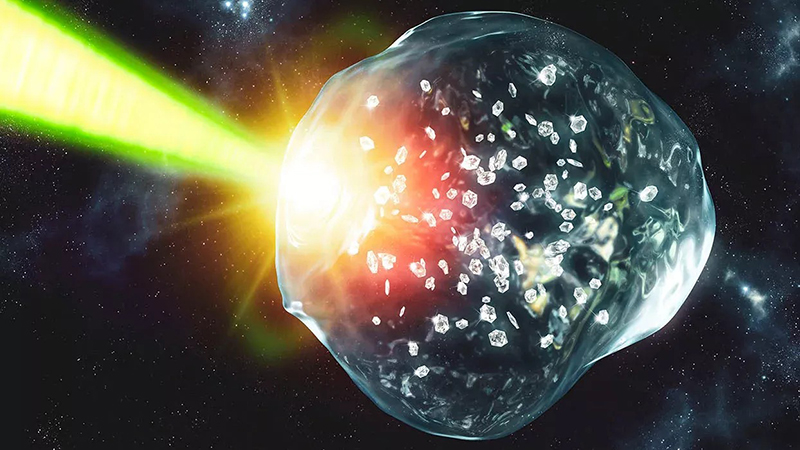
Using ultrapowerful lasers, scientists have blasted cheap plastic and transformed it into tiny "nanodiamonds" - and, in doing so, confirmed the existence of an exotic new type of water. The findings could potentially reveal the existence of diamond rain on ice giants in our solar system and explain why these frigid worlds have such strange magnetic fields. The laser-blasting technique could also lead to more Earthly applications.
Discovery of metamorphic diamonds in northeast Queensland could provide clues about how Australia was formed PhysOrg - July 29, 2022
Metamorphic diamonds are very rare, they only form in very specific places. They are also very small—from microscopic down to nano-sized. The unique diamonds form in subduction zones—the pressure of opposing plates grinding against one another over millions of years results in the creation of diamonds so small they cannot be seen with the naked eye, which is why they are so very rarely found. They have only ever been found in six other places on Earth. In this new effort, the researchers found a bunch of them inside of rocks along the Clarke River Fault, which came about when crustal blocks were pushed together approximately 500 million years ago.
World's largest blue diamond to come to auction has sold for $57.5 million CNN - April 27, 2022
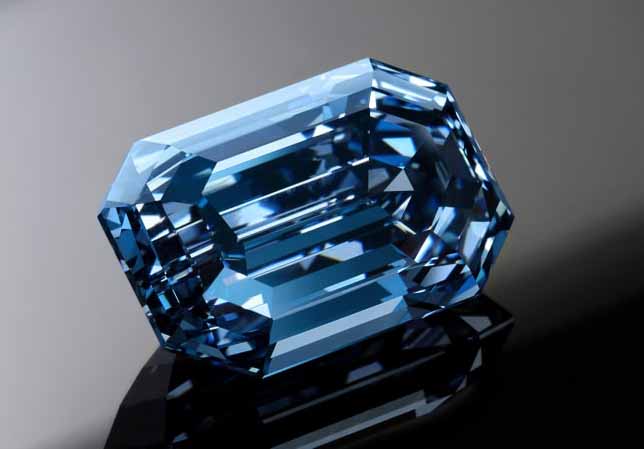
Named "The De Beers Cullinan Blue," the massive 15.10-carat step-cut gem sold at Sotheby's in Hong Kong after an eight-minute bidding war among four hopeful buyers, according to Sotheby's. The winning bid, which surpassed its high estimate of $48 million, came from an anonymous buyer by telephone.
Diamond hauled from deep inside Earth holds never-before-seen mineral Live Science - November 11, 2021
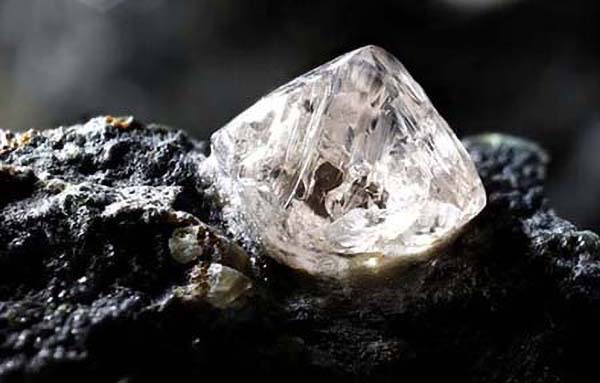
Named davemaoite after prominent geophysicist Ho-kwang (Dave) Mao, the mineral is the first example of a high-pressure calcium silicate perovskite (CaSiO3) found on Earth. Another form of CaSiO3, known as wollastonite, is commonly found across the globe, but davemaoite has a crystalline structure that forms only under high pressure and high temperatures in Earth's mantle, the mainly solid layer of Earth trapped between the outer core and the crust.
Elusive Crystal Predicted Decades Ago Found Trapped in a Diamond From The Deep Earth Science Alert - November 11, 2021
While humanity keeps reaching further and further towards the stars, a place much closer to home remains completely inaccessible to us. There's only so far we can reach into the ground, meaning the best we can do is speculate on what makes up so much of our planet deep beneath our feet. But every now and again, the planet itself coughs up flawed diamonds that have swallowed tiny samples of some of our world's more exotic minerals. Now, for the first time ever, one of these diamond capsules has transported a naturally occurring calcium silicate mineral from Earth's lower mantle (which makes up more than half of our planet's volume), and still preserved in its high-pressure form - in spite of its epic journey of more than 660 kilometers (410 miles) from below the surface.
Gazing Into a Diamond's Flaws Has Revealed Hidden Clues About How Our Planet Formed Science Alert - May 15, 2021
More than mere beautiful, coveted stones, diamonds hold another sort of wealth: fragments of Earth's deep history. From flaws within the mineral's near-perfect lattice, scientists have just worked out how to extract long-hidden records of our planet's past.
Tiny, One-of-a-Kind Diamond Is Trapped ... Inside Another Diamond Live Science - October 9, 2019
It was a gem of a find. A diamond that was recently extracted from a mine in Yakutia, Russia, had a surprise lurking inside: a tiny, second diamond. The outer diamond measured about 0.2 inches (4.8 millimeters) long, while the wee stowaway spanned about 0.08 inches (2 mm) long and weighed about 0.0001 ounces (0.004 grams). The hidden gem rattled around inside an air pocket at the heart of the larger stone, and Russian experts who examined the peculiar double gem declared it the only known example of a diamond with another diamond inside it, according to a statement. This unusual diamond-in-a-diamond drew comparisons to a traditional Russian toy called a matryoshka doll, in which successively smaller wooden dolls are nested inside bigger dolls, representatives with the Russian diamond mining company
Superdeep diamonds confirm ancient reservoir deep under Earth's surface PhysOrg - August 15, 2019
Analyses show that gases found in microscopic inclusions in diamonds come from a stable subterranean reservoir at least as old as the Moon, hidden more than 410 km below sea level in the Earth's mantle.
Confirmed: Earth Is Crushing the Ocean into Salty Diamonds Live Science - May 30, 2019
It's been said that diamonds are forever - probably because "diamonds are billion-year-old mutant rocks exposed to many lifetimes of crushing pressures and scorching temperatures in Earth's deep mantle" doesn't have the same snappy ring to it. Either way, it takes a long, long time for a chunk of carbon to crystallize into a sparkling diamond - so long, in fact, that scientists aren't positive how they're made. One popular theory maintains that many diamonds form when slabs of seabed (part of an oceanic plate) grind underneath continental plates at so-called tectonic subduction zones. During the process, the oceanic plate and all the minerals at the bottom of the sea plunge hundreds of miles into Earth's mantle, where they slowly crystallize under high temperatures and pressures tens of thousands of times greater than those on the surface. Eventually, these crystals mix in with volcanic magma called kimberlite and burst onto the planet's surface as diamonds. Support for this theory can be found in the oceanic minerals that give blue stones - like the infamous (and possibly cursed) Hope diamond - their signature hue. However, these diamonds are among the deepest, rarest and most expensive on Earth, making them hard to study.
Incredibly rare diamonds found inside a meteorite that crashed to Earth are remains of a lost planet created 4.5 billion years ago when the solar system formed Daily Mail - April 17, 2018
The Almahitta Sitta is named after the location in Sudan above which the space rock exploded in 2008. Witnesses at the town of Wadi Halfa and at a railway stop in the Nubian desert, known as 'Station Six' or Almahata Sitta in Arabic, reported they had seen a 'rocket-like fireball' in the sky. This extremely rare type of meteorite, known as an ureilite, is one of the main families of meteorites and range from few grams up to few kilograms. The diamonds in the meteorite have tiny crystals inside them that would have required great pressure to form
Biggest and best diamonds formed in deep mantle metallic liquid PhysOrg - December 15, 2016
New research explains how the world's biggest and most-valuable diamonds formed - from metallic liquid deep inside Earth's mantle. They determined that these diamonds sometimes have tiny metallic grains trapped inside them that are made up of a mixture of metallic iron and nickel, along with carbon, sulfur, methane, and hydrogen. These inclusions indicate that the diamonds formed, like all diamonds, in the Earth's mantle, but they did so under conditions in which they were saturated by liquid metal. As unlikely as it sounds, their research shows that pure carbon crystalized from this pool of liquid metal in order to form the large gem diamonds.
World's second-largest diamond 'found in Botswana' BBC - November 19, 2015
The world's second-largest gem quality diamond has been discovered in Botswana, the Lucara Diamond firm says. The 1,111-carat stone was recovered from its Karowe mine, about 500km (300 miles) north of the capital, Gaborone. It is the biggest diamond to be discovered in Botswana and the largest find in more than a century. The 3,106-carat Cullinan diamond was found in South Africa in 1905 and cut into nine separate stones, many of which are in the British Crown Jewels.
Asteroid impacts on Earth make structurally bizarre diamonds PhysOrg - November 21, 2014
Scientists have argued for half a century about the existence of a form of diamond called lonsdaleite, which is associated with impacts by meteorites and asteroids. A group of scientists based mostly at Arizona State University now show that what has been called lonsdaleite is in fact a structurally disordered form of ordinary diamond.
Space diamonds reveal supernova origins PhysOrg - February 15, 2012
Space diamonds may now be an astrophysicist's best friend. For years, scientists have found DNA-sized diamonds in meteorites on Earth. New research suggests that these diamonds spring from violent cosmic collisions, which may help scientists unravel mysteries surrounding exploding stars -- the birthplaces of ancient materials that predate our solar system. Although diamonds are rare on Earth, scientists believe that minuscule "nanodiamonds" abound in space. Researchers have been trying to decipher the origin of these enigmatic minerals for decades.
Vibration rocks for entangled diamonds PhysOrg - December 16, 2011
You can take two diamonds - not quite everyday objects, but at least simple and recognizable - and put them in such a state: in particular a superposition of a state of one diamond vibrating and the other not, and vice versa.
Two Diamonds Linked by Strange Quantum Entanglement Live Science - December 1, 2011
Scientists have linked two diamonds in a mysterious process called entanglement that is normally only seen on the quantum scale. Entanglement is so weird that Einstein dubbed it "spooky action at a distance." It's a strange effect where one object gets connected to another so that even if they are separated by large distances, an action performed on one will affect the other. Entanglement usually occurs with subatomic particles, and was predicted by the theory of quantum mechanics, which governs the realm of the very small. But now physicists have succeeded in entangling two macroscopic diamonds, demonstrating that quantum mechanical effects are not limited to the microscopic scale.
Diamonds show how Earth is recycled PhysOrg - July 30, 2008
Tiny minerals found inside diamonds have provided us with a rare glimpse of the Earth's deepest secrets. The Earth's crust that underlies our oceans is constantly being made at mid-oceanic ridges which run down the centre of our oceans. There, magma derived from the mantle (the layer beneath the crust) is injected between diverging tectonic plates, pushing them apart. On the far side of each plate, old oceanic crust is eventually recycled by returning it to the mantle at subduction zones, huge trenches that dive deep beneath the continents.
Why Hope Diamond Has Fiery Red Phosphorescence After Exposure To Ultraviolet Light Science Daily - January 4, 2008
Shine a white light on the Hope Diamond and it will dazzle you with the brilliance of an amazing blue diamond. Shine an ultraviolet light on the Hope Diamond and the gem will glow red-orange for about five minutes. This phosphorescent property of blue diamonds can distinguish synthetic and altered diamonds from the real thing, and it may also provide a way to fingerprint individual blue diamonds for identification purposes, according to a team of researchers from the Naval Research Laboratory, the Smithsonian Institution and Penn State.
Diamonds Nearly as Old as Earth Live Science - August 23, 2007
Diamonds are indeed forever, or at least nearly as old as the Earth, a new study shows. Scientists have unearthed diamonds more than 4 billion years old and trapped inside crystals of zircon in the Jack Hills region in Western Australia. Nearly as old as Earth itself and considered the oldest terrestrial diamonds ever discovered, the gems could give insights into the early evolution of our planet's crust.
Diamond star thrills astronomers BBC - February 16, 2004
Twinkling in the sky is a diamond star of 10 billion trillion trillion carats, astronomers have discovered.
The cosmic diamond is a chunk of crystallised carbon, 4,000 km across, some 50 light-years from the Earth in the constellation Centaurus. It's the compressed heart of an old star that was once bright like our Sun but has since faded and shrunk. Astronomers have decided to call the star "Lucy" after the Beatles song, Lucy in the Sky with Diamonds.
Diamond origin 'can be determined' BBC - July 25, 2003
Belgian scientists have found a way of determining the origin of individual diamonds, according to the Diamond High Council of Antwerp. The body which controls trade in diamonds says the discovery could help the worldwide campaign to stop the illegal sale of stones from war zones, a trade that has helped finance several African civil wars. The researchers found they could gain a unique chemical image of each diamond, by drilling a tiny hole in it with a laser beam. This allowed them to identify the source from which it came because each precious stone has a chemical composition specific to an individual mine.